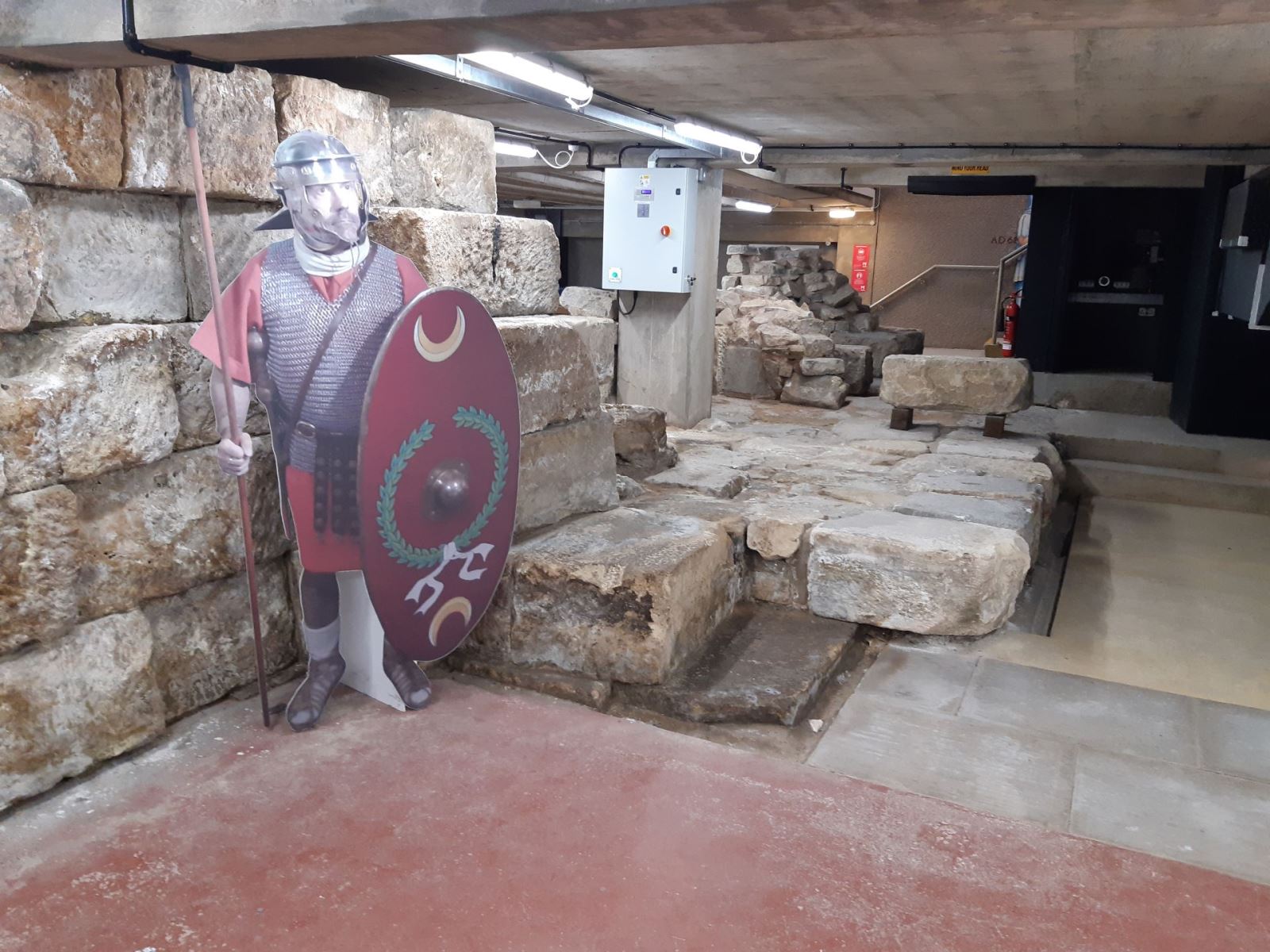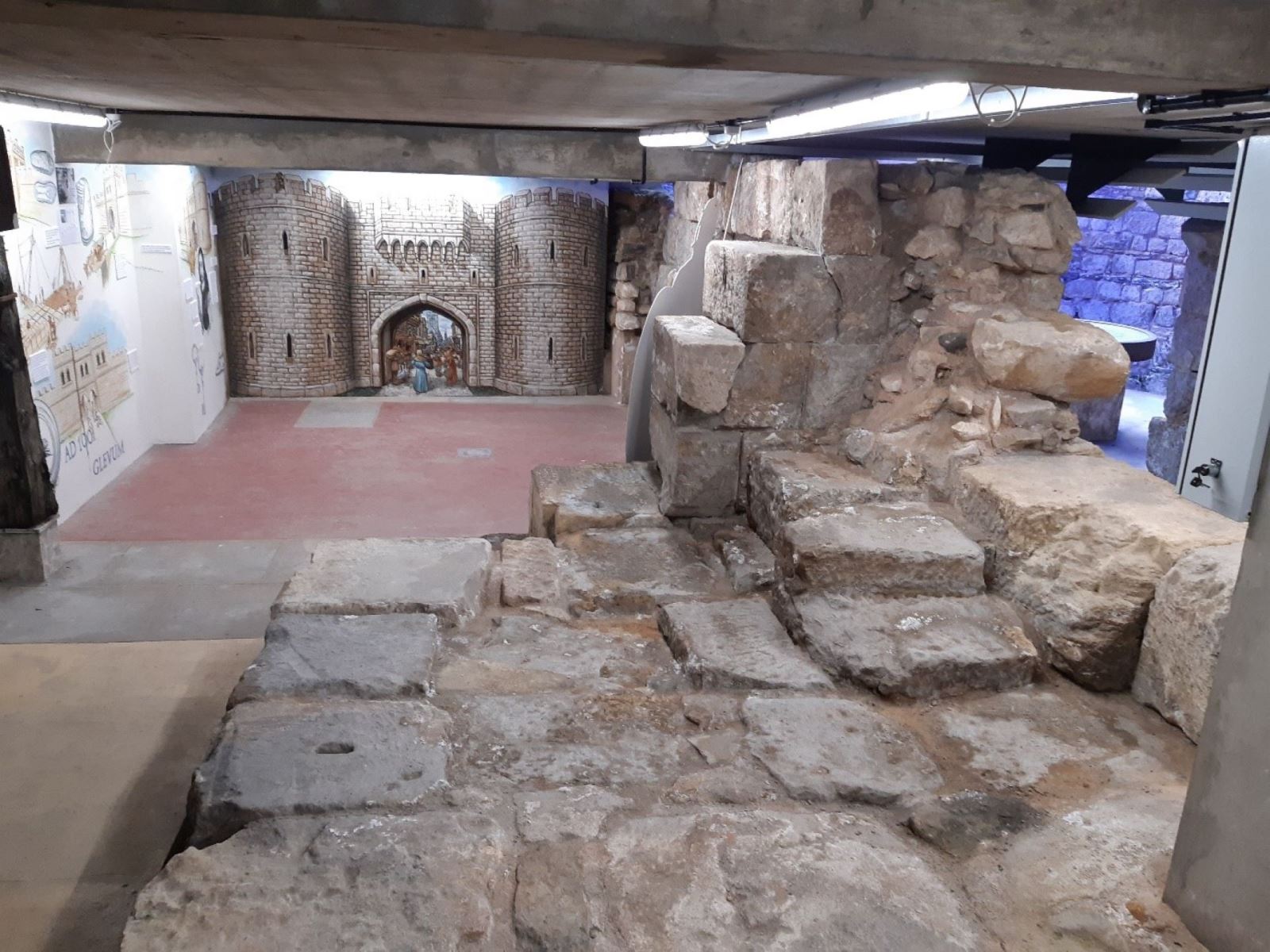Eastgate Viewing Chamber
.jpg)
The Eastgate viewing chamber is one of the great historical treasures of the city and the best location for viewing Gloucester’s ancient defences. In this well concealed chamber beneath the Boots building can be seen part of the mighty defences of Gloucester first built by the Roman army in the 1st century AD. At this time the all-conquering invasion of Britain was taking place and Gloucester was chosen as an ideal location for a legionary base to protect and strengthen the strategically important crossing of the River Severn. This ensured that further military incursions into South Wales could happen as the Romans sought to capture the vast mineral resources that this region could offer.
a.jpg)
The first wall constructed by soldiers, under the guidance of legionary engineers, was built from timber and earth with a deep V-shaped ditch as a first line of defence. Visible, inside the chamber today, is an original oak post that has survived for almost 2000 years. Later the wall and gate structure were replaced by massive limestone blocks to form an imposing rectangular fortress of 47 hectares… large enough to accommodate an entire legion with supporting staff and trades. Piling foundations guaranteed the longevity of this wall which in fact survived into the 17th century albeit with some reconstruction over time. It seems almost inconceivable now that for several decades during the 1st century AD Gloucester was very much a ‘frontier town’ right on the edge of the Roman empire. Troops passing through the West gate and over the river were entering the territory of the warlike Silures tribe and the subjugation of these Celts was a long and difficult campaign.

Modifications to the defences were made at various stages through the Mediaeval period including the rebuilding of the gate towers and the addition of a water filled structure known as the ‘Horse pool’. This was an essential means of watering / washing horses and washing / soaking wooden wagons and sometimes even cooling off for overheated citizens during hot summers!

Gloucester’s defences were tested several times but particularly during the unrest of the Barons Wars in the 13th century and during the English Civil War. In 1643 Gloucester withstood a 6-week siege by Royalist forces under King Charles I and the Eastern section of the wall played a pivotal role in keeping the Royalists from capturing the city. Upon the restoration of the monarchy in 1660 Charles II, remembering Gloucester’s defiance, gave orders for the wall to be demolished which in part accounts for the apparent lack of ancient defences around the city today. Significant sections do survive however, mostly below ground, in several locations around Gloucester and can still be seen today especially during the September Heritage Open Day events programme.
Although some of the Eastgate chamber can be seen through the glass cover outside in Eastgate Street, there is much more hidden beneath. The best way to see this site is by guided tour run either by the Museum of Gloucester or by Gloucester Civic Trust. For further details please visit museumofgloucester.co.uk
Related
Comments
Comments are disabled for this post.




 to add an item to your Itinerary basket.
to add an item to your Itinerary basket.

